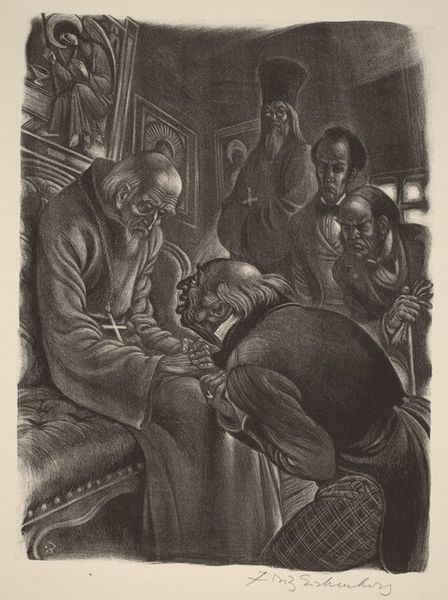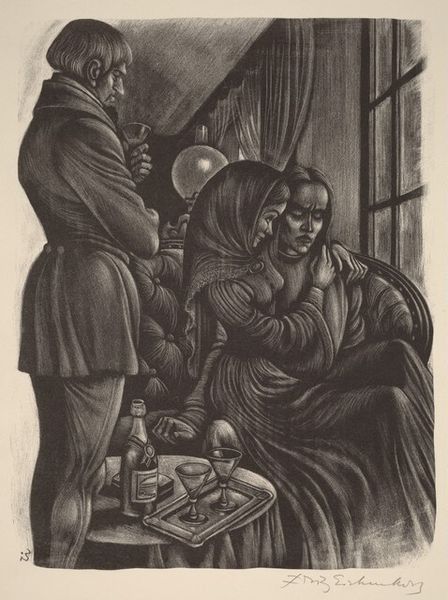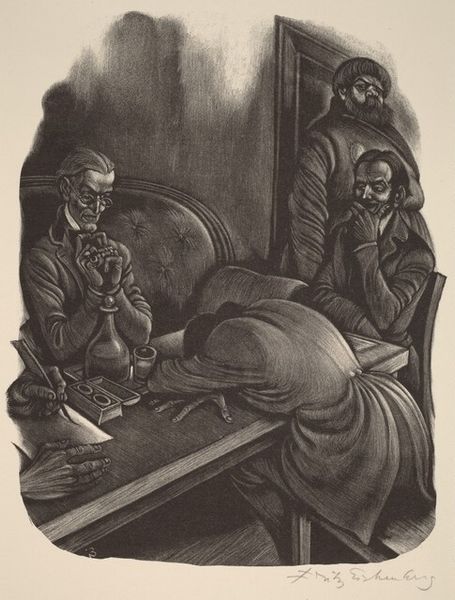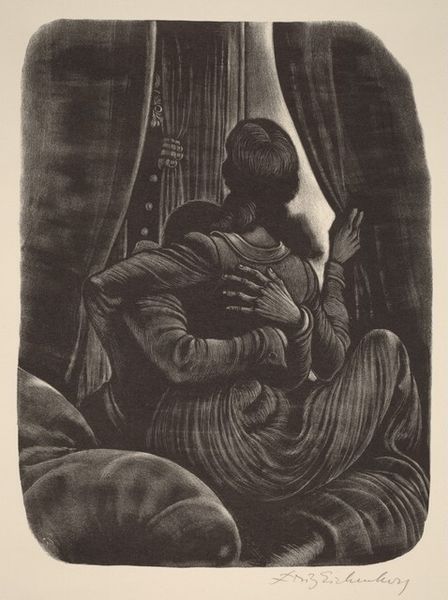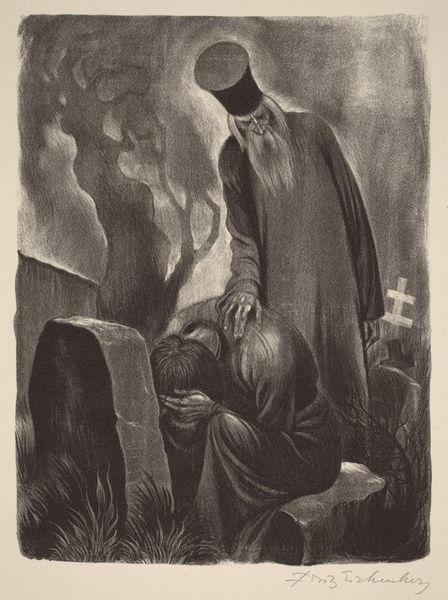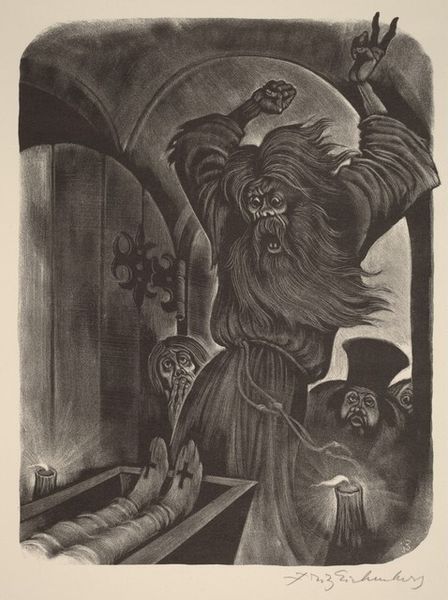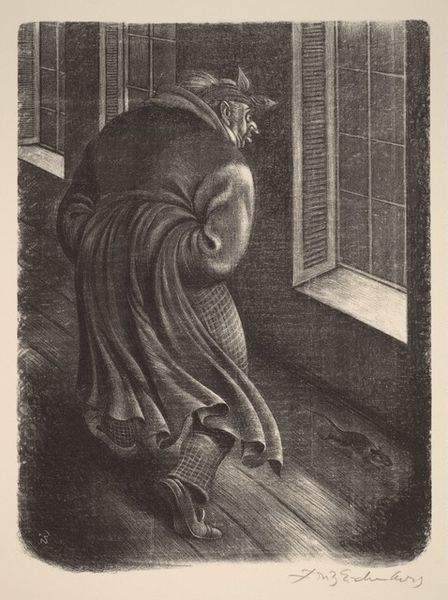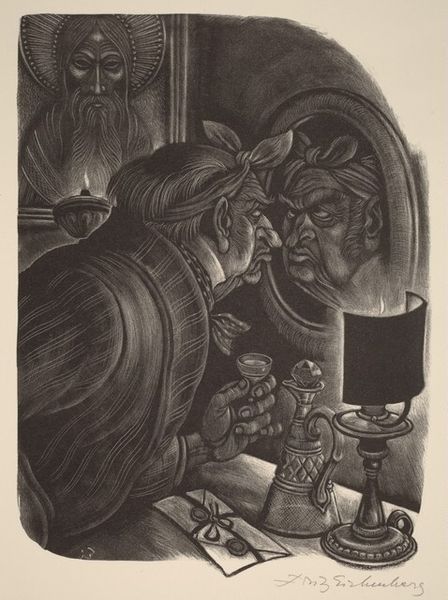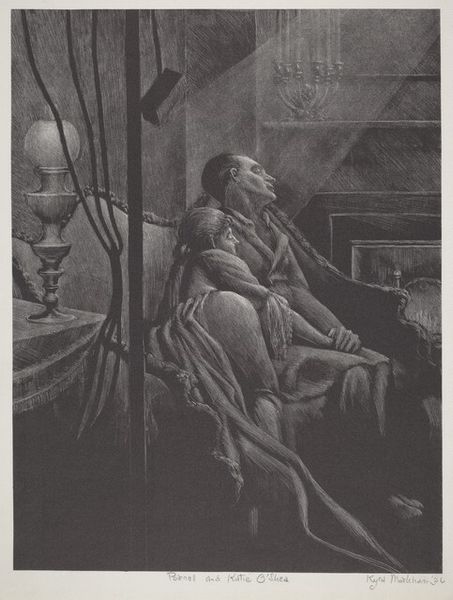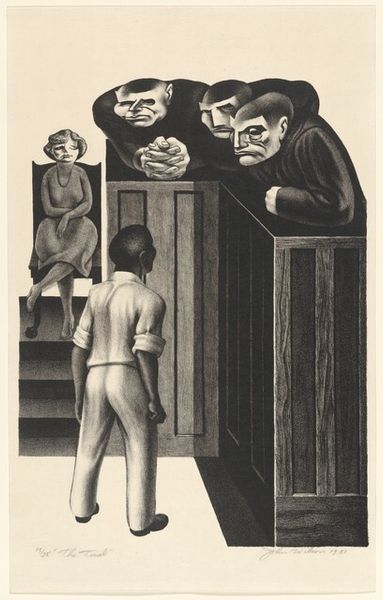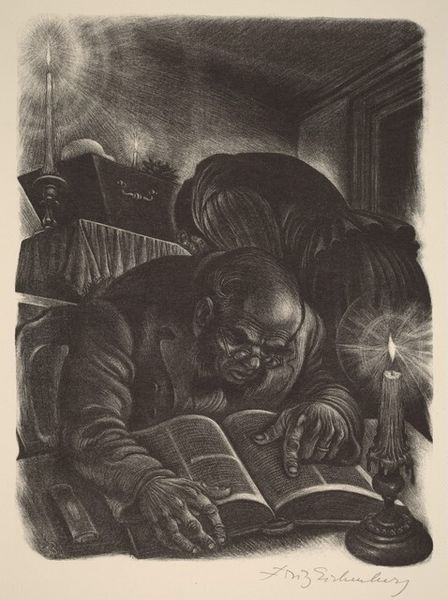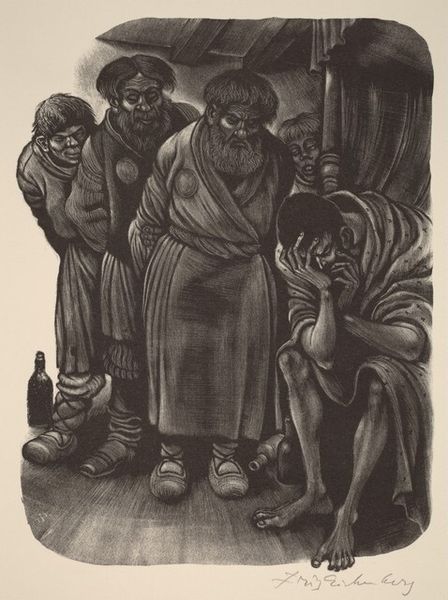
drawing, print, engraving
#
portrait
#
drawing
# print
#
caricature
#
figuration
#
engraving
#
realism
Copyright: National Gallery of Art: CC0 1.0
Curator: Fritz Eichenberg's 1949 engraving, "Cana of Galilee," immediately strikes me. It has this shadowy, almost gothic feel, wouldn’t you say? Editor: Absolutely. The stark contrasts, achieved through masterful line work, set an intensely spiritual tone. I am drawn to the tonal arrangements—they orchestrate our reading, highlighting the composition's sacred dynamic between the figures. Curator: And what about those spectral faces hovering in the background? It's like Eichenberg is inviting us into a world where the veil between the earthly and the divine is whisper-thin, or that there’s another part of our mind the person is exploring, a subconscious, perhaps? Editor: Precisely. Their placement evokes a layered narrative. Eichenberg’s treatment of the faces in the background also indicates careful structural planning that complements the work as a whole. Note their placement on the Z axis. They create a visual and thematic echo in the form, grounding the composition while simultaneously invoking the ethereal. Curator: What is especially arresting is how the figures are positioned; this cleric whose hands are offering or accepting something, maybe; while someone stares above and past. The engraving's based on Dostoyevsky's novel "The Brothers Karamazov," portraying a pivotal scene in which Alyosha is deep in contemplation. I suppose that could explain why the figures appear as such in his spiritual plane. The darks of the subject also reminds us of our time of trouble and what that meant to him as a refugee during the world war. Editor: An astute observation. The physical rendering here is less about verisimilitude, instead we understand the way form indicates devotion. Eichenberg distorts proportion, elongating limbs to intensify a kind of pleading expressiveness. Curator: Overall, it is simply quite arresting to the eye! Thank you so much for delving with me into what this drawing, what the moment suggests to our deeper selves. Editor: It’s an honor; an artwork that yields as many questions as it answers is certainly worth our attention.
Comments
No comments
Be the first to comment and join the conversation on the ultimate creative platform.
